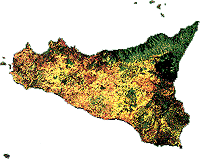
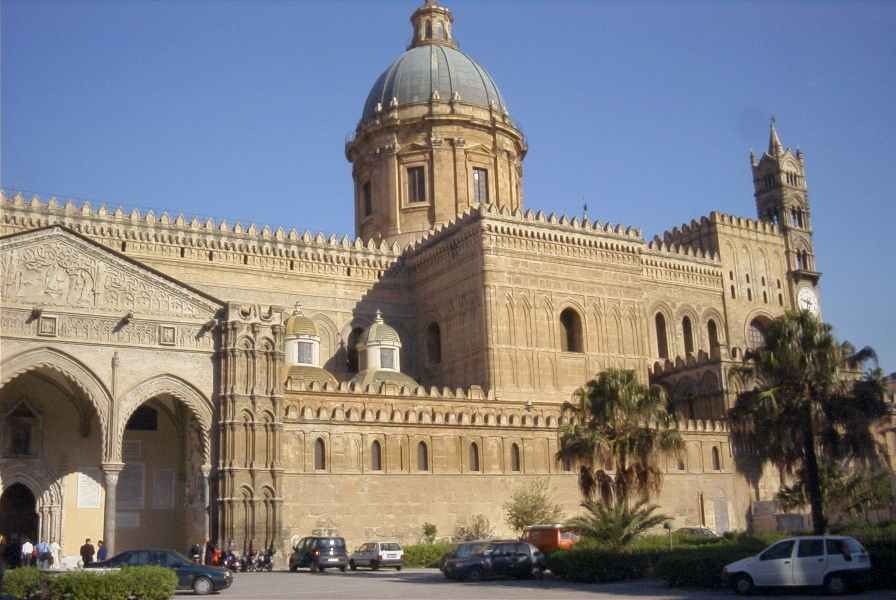 Palermo's cathedral -- an ornate hodgepodge on the outside but a politically correct baroque gem inside
Palermo's cathedral -- an ornate hodgepodge on the outside but a politically correct baroque gem inside
Palermo was a dirty, historic, interesting town that we saw too little of but will return someday to visit in a proper fashion. We spent three nights there but most of the days were spent elsewhere with only one morning of real sight-seeing when we visited three major churches, two in Sicily and one in Monreale.
We were the first in line on Tuesday morning to enter the Norman Palace (now the home of the Sicilian Parliment). The site has been on the sight of fortresses since the Punic war days. We saw little of the palace but entered through the three storied courtyard below which was added in the 17th century when the Spanish Viceroys ran the island.

Next we entered the very spectacular Norman chapel built by Roger II in the first 10 years of his reign (1130-1140). The chapel came first with the rest of the palace added later in bits and pieces through the years. Therefore it has really no visible outside but it makes up for that rather grandly on the inside.
Roger II was a very tolerant king who embraced the conquered Arabs as well as the Jews (who made up 10% of the population of Sicily before the Spanish Inquisition); He created a highly intellectual and multicultural court reflected in, among other things, the architecture, which, like much of the island's other monuments has been altered or destroyed by successive rulers trying to sanitize it. (And some of us thought George Orwell created the idea of Winston Smith rewriting history in 1984!)
The influence of these diverse artisans can be seen in the various levels of the chapel. The lower levels contain the work of the Arab artisans whose religion forbad the depiction of the human form and so they created beautiful abstracts such as this:
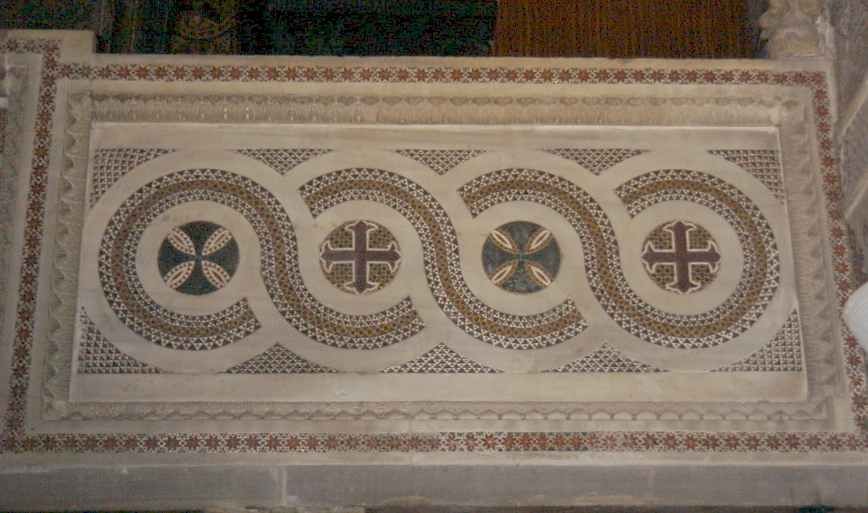
Given that Roger II created this chapel, we'd expect some picture to convince the massess that God really wanted him to be king. We were not disappointed:
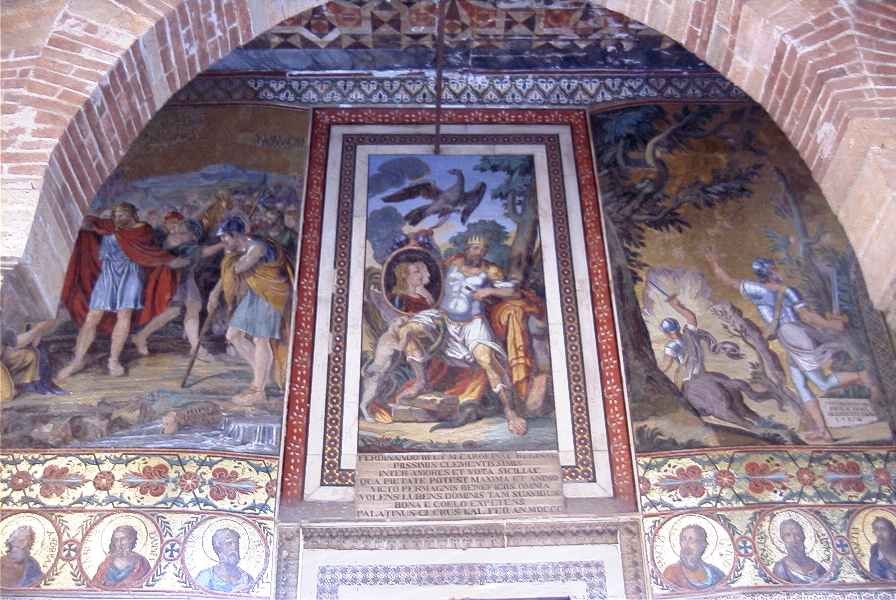
Above the Arab abstract tiles appear the exquisite mosaics made up of cement, paint, and glass fused with gold (not only to appear brilliant, but to make the gold useless if removed and so to protect the work from robbers over the centuries). These were created over many years from 1140 through 1170. The detail suggests that the artists were in no hurry. Here's two different views:
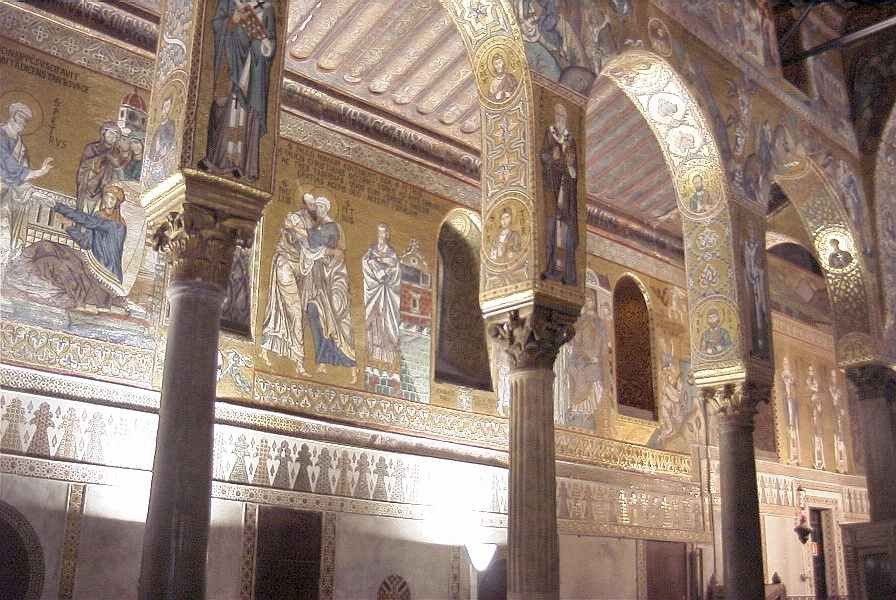
and
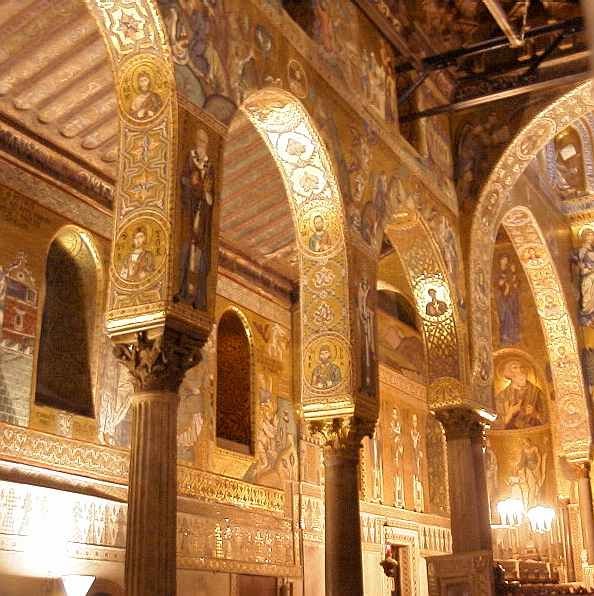
And, of course since this is a Norman religious space, we have the Christ Pantocrator which we had already seen in Cefalu and would soon see later in the morning at Monreale.
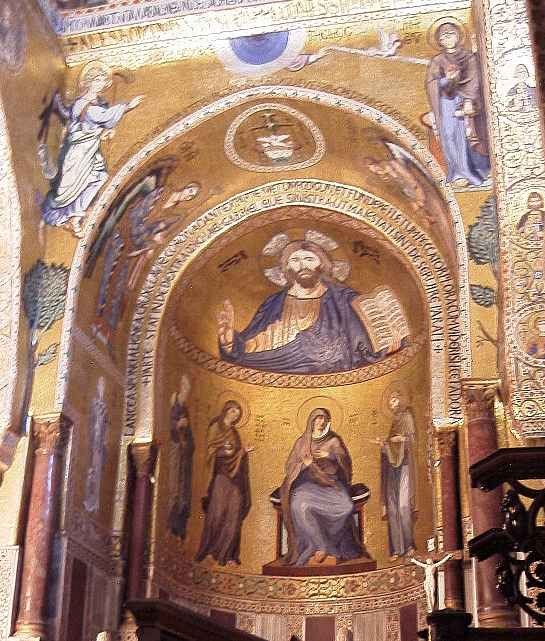
Many pictures I took in this chapel failed to come out. Two I miss the most are of the richly decorated 12th century Paschal candlestick nearly 15 feet tall and the beautifully carved Arabian ceiling.
The cathedral (Saint Mary of the Assumption) was our next stop. The site probably contained religious spaces long before including Roman temples, a Byzantine church, and a Mosque. We found this "new" cathedral to be completely different from the Norman chapel even though it was originally built around the same time in the Sicily-Norman style. Over the years, it has had many additions including the Catalan-Gothic porch below. In the upper right of the picture, you can see the makings of a baroque dome.
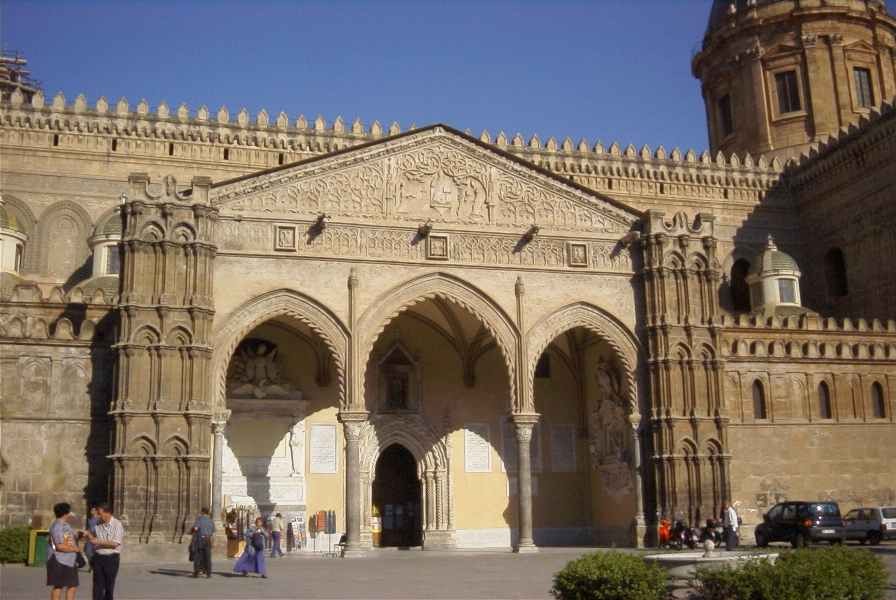
While the cathedral looks Norman/Gothic on the outside, inside the Norman Arab arches have been reconstructed into a Baroque church by politically correct artisans trying to destroy the collective memory of the multicultural synthesis of Sicily under Roger II.
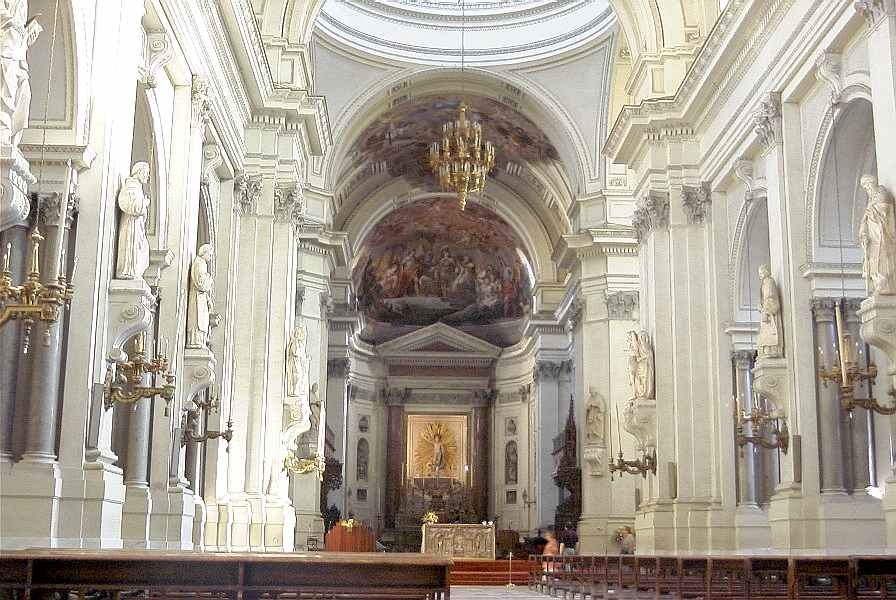
Here's a close-up of the baptistery to give you an idea of the intricate work here.

This was our only real sightseeing tour of Palermo other than a few drive bys with the tour guide telling us in the microphone what we were seeing. A couple nights later, he took us to a night of Sicilian folklore with dancing, singing, and the famous Sicilian puppet shows directed by a 72-year-old artist whose family had been conducting such shows and making the wooden puppets for many generations. About the only other view we got of the natives was watching the housewives buy goods from the peddlars without leaving their balconies. They simply let down a basket, sometimes three stories, with their lira and retrieve their vegetables, etc.
The only sense of the place that I really got was while jogging through Palermo. The streets are often fairly wide for such an old town, probably because much of the place got rebuilt after the WWII bombing. Even early morning, though, the streets were somewhat hazardous with traffic and dogs. Paris dogs had made me complacent as they are behaved to the point of being snooty; in the nine months of running Paris streets, I have never been even barked at, much less chased. Palermo dogs seemed to be the only pedestrians stirring before sunup as I tried to squeeze in a few miles on its cobblestones. One time I turned into a cul-de-sac and got chased out by a pack of them. They look pretty scrawny like they were not eating much and maybe a few of my extra pounds-of-flesh would have done them some good.
But let's continue on our adventure. After seeing the Norman palace and the Neoclassical cathedral on that Tuesday morning, we ventured to another Norman masterpiece in Monreale. Please join us by clicking here.
Where do you want to go today? Here's a few choices:
